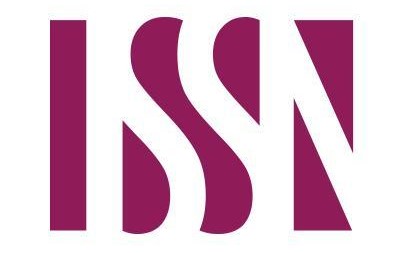The degree of social anxiety among students at the college of physical education and sports sciences in Palestine Technical University – Kadoorie
Main Article Content
Abstract
The aim of the research was to identify the degree of social anxiety among students of the Faculty of Physical Education and Sports Sciences at Palestine Technical University - Kadoorie. The researcher used the descriptive analytical approach, as the study was conducted on a simple stratified random sample consisting of (113) male and female students from the Faculty of Physical Education and Sports Sciences at Palestine Technical University - Kadoorie. The researcher used the social anxiety measurement tool designed by Al-Hanfi et al. (2022) and consisting of (19) statements. The results of the study showed that the total degree of social anxiety among students of the Faculty of Physical Education and Sports Sciences at Palestine Technical University - Kadoorie was low, with an arithmetic mean of (2.16 ± 0.59). The researcher recommends enhancing self-confidence through workshops and training courses focusing on self-acceptance and enhancing student cooperation, harmony, and group cohesion.
Article Details

This work is licensed under a Creative Commons Attribution-NonCommercial 4.0 International License.
References
Abdullatif, M., Ahmed, M. S., & Jassim, L. K. (2009). A Comparative Study of the Level of Depression among Students in the Hostel at Anbar University.
Al-Hanfi, R. , et al. (2022). Psychometric properties of the Social Anxiety Scale among university students. Journal of Psychological Counseling, 7(3), 139–161.
Al–Khasawneh, G. (2007). Estimate the Levels of Anxiety of Female Students in Physical Education College at Yarmouk University in Gymnastics Courses. http://hdl.handle.net/20.500.11888/2586
Al-Kubaisi, M. S. A., Al-Jurani, L. K. J., & Al-Hazimawi, T. A. J. H. (2019). A Comparative Study on the Level of Depression Among Fourth-Year Female Students in the Colleges and Departments of Physical Education and Sports Sciences in Diyala. Modern Sport, 18(3), 27–40.
Al-Momani, M., & Naeem, M. (2013). Future Anxiety Among College Students in A–Jalil Region in Light of Some Variables. Jordan Journal of Educational Sciences, 9(2), 173–185. https://jjes.yu.edu.jo/index.php/jjes/article/view/535
Al-Zubaidi, A. (2012). Social anxiety and its relationship to academic adjustment among students of the Faculty of Physical Education at Tikrit University. The 18th Conference of Colleges of Physical Education, University of Mosul, 4(1), 19.
Atarbay, S. (2017). The effect of social anxiety levels on psychological resilience in university students from different departments [Unpublished Master’s Thesis]. Istanbul University.
Atiya, A. A.-S. H., & Moseekh, L. Z. (2023). The role of the organizational climate for workers in volleyball sports federations in Iraq. Kufa Journal Physical Education Sciences, 2(6).
Bakr, A. (2016). Social anxiety among athletes: A comparative study. Journal of Physical Education and Sports Sciences, Helwan University, 77(3), 117–129.
Gümüş, A. E. (2006). A prediction of social anxiety based on self esteem and dysfunctional attitudes. Turkish Psychological Counseling and Guidance Journal, 3(26), 63–75. https://doi.org/https://doi.org/10.17066/pdrd.92607
Hassan, S. (2004). Work stress: Causes, consequences, and effects. Arab Administrative Development Organization, Symposium on Work Stress and Conflicts.
Jasim, A. (2015). Assessment of social anxiety among female students of the Faculty of Physical Education and Sports Sciences – University of Karbala. Journal of Physical Education Studies and Research, 45, 70–82.
Knight, L. K., Stoica, T., Fogleman, N. D., & Depue, B. E. (2019). Convergent Neural Correlates of Empathy and Anxiety During Socioemotional Processing. Frontiers in Human Neuroscience, 13. https://doi.org/10.3389/fnhum.2019.00094
Masoud, A. R., & Shabib, S. S. (2024). Evaluating the level of some psychological traits among women practicing sports activities. Journal of Studies and Researches of Sport Education, 34(2). https://doi.org/DOI:https://doi.org/10.55998/jsrse.v34i2.512
Murray, A., Marenus, M., Cahuas, A., Friedman, K., Ottensoser, H., Kumaravel, V., Sanowski, J., & Chen, W. (2022). The Impact of Web-Based Physical Activity Interventions on Depression and Anxiety Among College Students: Randomized Experimental Trial. JMIR Formative Research, 6(4), e31839. https://doi.org/10.2196/31839
Nasief, G. (2024). The sportsmanship level of the Palestinian national football team players. Journal of Studies and Researches of Sport Education, 34(3). https://doi.org/DOI:https://doi.org/10.55998/jsrse.v34i3.716
Netz, Y., Wu, M. J., Becker, B., & Tenenbaum, G. (2005). The effects of physical activity and exercise on depression, anxiety, and stress. Journal of Sport and Exercise Psychology, 27(3), 367–378. https://doi.org/https://doi.org/10.1123/jsep.27.3.367
Parsons, S., Smith, J., & Johnson, R. (2013). The impact of physical activity on the mental health of young people. Journal of Physical Education and Sport, 13(4), 45–56.
Ren, J., Li, X., Chen, S., Chen, S., & Nie, Y. (2020). The Influence of Factors Such as Parenting Stress and Social Support on the State Anxiety in Parents of Special Needs Children During the COVID-19 Epidemic. Frontiers in Psychology, 11. https://doi.org/10.3389/fpsyg.2020.565393
Sallis, J. F., Grossman, R. M., Pinski, R. B., Patterson, T. L., & Nader, P. R. (2000). Physical activity and social support: An interaction model. Health Psychology, 19(3), 277–285. https://doi.org/https://doi.org/10.1037/0278-6133.19.3.277
Türkay, İ. K. (2021). Investigation of Social Appearance Anxiety Levels of Physical Education and Teaching, Coaching Education and Sports Management Department Students in Terms of Different Variables. Journal of Educational Issues, 7(2), 455. https://doi.org/10.5296/jei.v7i2.19296





 IASJ
IASJ CC-BY-4.0
CC-BY-4.0 turnitin
turnitin ISSN
ISSN DOAJ
DOAJ Crossref
Crossref GoogleScholar
GoogleScholar Orcid
Orcid